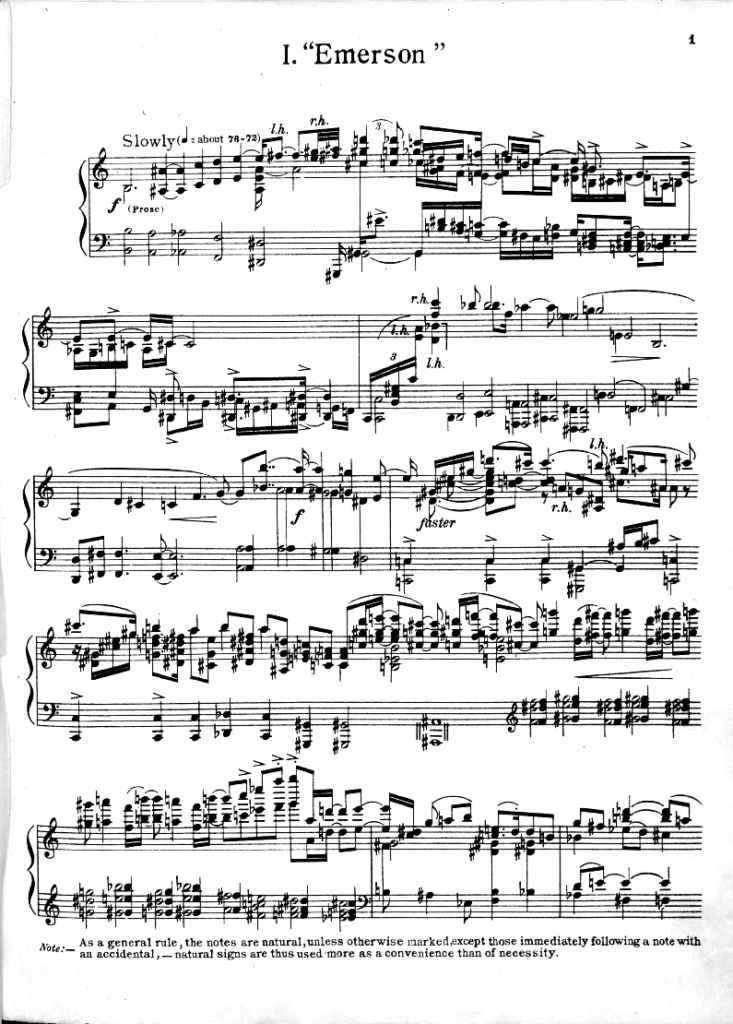There were more signs in March of how arts and cultural events are returning with a full head of steam to Salt Lake City.
Within 10 days, there were two musical events – NOVA Chamber Music Series’ Songs of Play and Jason Hardink’s Concord/Revisited Project – with six world premieres by composers, including two who are Utah based. There was the phenomenal all-Liszt concert by pianist Ching-Yun Hu, as part of the Gina Bachauer International Piano Foundation’s concert series.
Two other highlights were How Flowers Bloom, a new play by Liv C. Smith, in a production at the Alliance Theater in Trolley Square and the screening of Échale Ganas: The Villa’s Tacos Story, a documentary about taco trucks and entrepreneurship, which was presented at the Salt Lake City meeting of the Society for Applied Anthropology.
Four of the world premieres were piano works, which came in the astonishing three-concert evert Concord/Revisited at Westminster College. It opened with Jason Hardink’s performance celebrating the centenary of Charles Ives’ Concord Sonata. On each evening, Hardink opened the program with a discussion, with the first featuring Lance Newman, a Westminster College scholar who has researched Transcendentalism. The opening discussions on the second and third evenings featured the composers: Anthony R. Green, Inés Thiebaut, Jason Eckardt and Steve Roens. The spirit of the discussions fit in appropriately with the purpose of Ives’ Essays Before A Sonata. Oddly enough, Ives barely referenced the Concord Sonata in the essays, preferring instead to talk more about Ralph Waldo Emerson, Nathaniel Hawthorne, The Alcotts and Henry David Thoreau.
Newman’s participation in the opening night of the event was helpful for the audience, which permitted the audience to simply let the music of the Concord Sonata wash over them without necessarily having to burden one’s mind in the intellectual exercise of listening to the work. Rather, it was Hardink’s refreshing, clarifying approach to the work that teased out the Transcendental core of the sonata. By the time Hardink arrived to the final movement, a tribute to Thoreau’s literary language, he had completed the journey with tantalizing results, evoking the ethereally harmonious setting that Thoreau celebrated in his solitude.
Hardink’s meticulous sensitivity for communicating the original intent shined in the premieres of the four works on the following two evenings. Thiebaut’s panta rhei, which included electronics, was a magnificent multilayered symbiotic addition that properly addressed the creative and holistic objectives of the project. Indeed, it sparked imagining how Ives might have used electronics had they become available in his lifetime. Steve Roens’ work Promontories riffed nicely on the rowdy, playful and frankly comic character of the Concord Sonata’s Hawthorne movement, while framing it in a contrapuntal package that also suggested a good deal of spaciousness in the music. Jason Eckhardt’s a melody which the air had strained, which references a line from the Sounds chapter of Thoreau’s Walden Pond, emerged as the perfect 21st century companion piece to the fourth movement of the Concord Sonata. Eckardt’s music can be a beastly challenge for performers but when it is fully elucidated and shaped with fidelity and integrity to the composer’s score, its revelations are rewarding. Hardink gave the 30-minute work an outstanding premiere.
The final concert of the event was dedicated to Anthony R. Green’s The Baldwin Sonata, epic in its comparative scope to the Ives work. A comprehensive ode to the literary legacy of James Baldwin, the sonata’s four movements are titled, Going, Telling; The Outing (Queering existence); How Much I Owe and Facing Reality (the changing same). Green’s approach was different from how the other composers approached their respective commissions. Green found the parallel that inspired Ives to create the Concord Sonata in the first place. Ives had taken the unique opportunity to write about local authors, who were alive when he was growing up in the mid-19th century. Baldwin, who died when Green was still very young, is a monumental influence for the composer. Thus, the sonata comprises quotations and other elements that have been instrumental in Green’s life, much in the same way that Ives incorporated those of his own life in the Concord Sonata.
There is an incredible amount of spaciousness in the 70-minute work, which includes a mountain of musical material but it also is those spacious moments when the listener has enough time to absorb what they have just heard, which Hardink captured in every instance. Of special note was the second movement, The Outing (Queering existence), a tremendously effective musical rendering of the 1951 short story (The Outing), which represents the first Baldwin published work referencing the author’s sexual identity and formative experiences.
NOVA’s March 13 Songs of Play concert brought two delightful premieres to Salt Lake City — Pearl, a sonata for violin and piano, by Stephanie Ann Boyd and Counterplay by Luke Dahn, for trombone and piano. Pearl is a shimmering present for the violin and Madeline Adkins, Utah Symphony concertmaster, along with pianist Viktor Valkov, unwrapped all of the gems in this package. For the work, commissioned as part of the World Sonata Project 2022, Boyd penned three movements – Fantasia Ultraviolet, Lux Aquae and Dance Iridescence, which harken to the natural elements and features of the violin. Dahn’s Counterplay, featuring Mark Davidson, Utah Symphony’s principal trombonist, and Valkov, blended march features and a deft hand of counterpoint that became a musical version of a chess game. However, this one ended in a draw, really the only worthy outcome for the pair who capped the premiere in grand champion style.
Beginning tomorrow (March 31) and available for the next two months, the Gina Bachauer International Piano Foundation will make available, with purchased access, a streaming video on demand presentation of Ching-Yun Hu’s tour de force concert from March 11, exclusively dedicated to transcriptions and original music by Franz Liszt. Hu’s performance in every work elicited the core of what made Liszt’s works transcendent in their storytelling power. There is the exquisite cinematic imagery that springs from Liszt’s music and Hu brought it out into the open with a grace that likely surprised many listeners who normally associate the composer with pyrotechnic athleticism. Hu’s fearlessly perfect performance reminds us of just how versatile Liszt really was as a composer and performer. For more information about purchasing access to the streaming video of Hu’s concert, visit the Bachauer website.
How Flowers Bloom — Liv C. Smith
Creative expression can be therapeutic and constructive. In Liv C. Smith’s new play How Flowers Bloom, the synthesis of stories the playwright gathered from interviewing women in Salt Lake City about crises that challenged and affected their emotional and mental health comes through credibly and realistically.
The two-act play encompasses the stories of five young women, who know each other and socialize together. One is questioning her spirituality after her mother and brother died in a traffic accident. Another uses alcohol to cope with the stress and trauma of sexual assault. A third young woman, who is queer, is ready to live independently but feels manipulated by her grandfather. A fourth character, obsessed with perfectionism, is disappointed that she has yet to find any success in her aspirations for ballet and, meanwhile, has an eating disorder. Rounding out the group is a painter who finds it difficult to leave a relationship that is emotionally abusive. A therapist’s presence anchors the setting as the audience learns about each of the character’s stories.
There also are several male characters, with one actor portraying them. They include the emotionally abusive, controlling boyfriend; a thoughtful, compassionate friend who is romantically interested in one of the women and the grandfather who insists on having his granddaughter available to handle any situation, including concerns about her brother.
While the play contains a lot of emotionally charged material, its presentation is quite understated but also well reasoned. For example, when the one young woman who has been using alcohol to cope with the trauma of sexual assault and is now dating the compassionate young man who had expressed a romantic interest in her, the therapist welcomes the news but advises her to proceed cautiously. The therapist asks her whether or not dating him has been constructive for her mental health. She says that she is drinking less and feels more motivated than usual. The therapist follows up by asking, “Do you think your mental health is dependent on him? If he goes away, will the stability go away too?” The young woman responds, “Actually, I don’t think so. It’s more that he motivates me to fight to be happy on my own, so that I can share that happiness with him. Before him, I couldn’t imagine a future, everything just felt too uncertain. But now, I’ve started having daydreams about getting married. And even if it’s not with him, I’ve realized that I want that.” The therapist seems pleased, acknowledging that the young woman who insisted on finding immediate certainty is now willing to become more patient in discovering step by step what self fulfillment might genuinely look like.
Smith’s script has the appropriate sensitive touch. The play would benefit from a significant tightening. As a one-act play, it would achieve a more elucidating impact for its thoughtful epiphanies. Ideally, this play would be a solid vehicle for use at workshops or clinical settings as well as in high school or college productions.
The production, made possible with a grant from the Salt Lake City Arts Council, was coordinated with the Alliance Theater, located in Trolley Square, and the Umbrella Theater Company.
Échale Ganas: The Villa’s Tacos Story
A marvelous, enticing and richly informative short-form documentary, Échale Ganas: The Villa’s Tacos Story elegantly weaves themes of immigration, culture, family legacy, cuisine, community development and entrepreneurship with the quintessential Mexican taco as its centerpiece. The film, which received its premiere this year at the Big Sky Documentary Film Festival, was presented during a session at last week’s Salt Lake City for the Society for Applied Anthropology. In just 29 minutes, Échale Ganas (which translates approximately to “giving it your all” and “never giving up”) encompasses many meanings, which arise from the holy trinity of the taco in its fundamental, genuine form – meats, salsas and homemade tortillas.
Directed by Yumeng Shirley He and produced by Ulysses Salcido III, the film from both behind and in front of the camera nicely represents the hugely positive impact and potential of community pluralism that coincides with the data of the recent census. In Los Angeles, the respective portions of the populations who identify as Mexican American and Asian American are among the largest for the city, reflecting a trend that has been observed in virtually all of the country’s 50 largest metropolitan areas.
He, who grew up in China with a family, which also prized excellence in the making of her culture’s most treasured foods, says in her director’s statement that she decided to make this film after tasting Villa’s Tacos for the first time.
Victor Villa, whose family came from Michoacán, Mexico, is the main subject of the documentary, which was filmed in the city’s Highland Park neighborhood and during the pandemic as well. Villa understands completely the intense competitive dynamics of running a street taco business in a market that happens to include a heavily publicized NCAA-style tournament where patrons vote for their favorite taco purveyor. The competition runs five weeks and includes street vendors as well as restaurants. The winner who survives every round receives a trophy and bragging rights for their L.A. Taco-Taco Madness victory. Incidentally, for the 2022 tournament begins March 31. Thus, Villa who was the underdog in 2021 now is the defending champ this year.
Villa, a master of Instagram (the business has 34,500 followers) and other social media platforms, stayed afloat during the pandemic with a huge online business. A graduate of California State University at Northridge, Villa decided to break out of the pack in the business with his family-inspired interpretation of the estilo Los Ángeles taco – a seven-layer creation. Memo Torres at the L.A. Taco website, which is a great intelligence resource for taco lovers in the city, described Villa’s creation as:
That’s when the queso-taco 2.0 was created. Its layers of vibrant flavors, textures, and ingredients carefully orchestrated into a mariachi song for your eyes and taste buds. The taco essentially is Victor Villa in its colorfulness, depth, and enjoyment. It has a strong character and is unafraid of being loud while remaining tempered and gracious.
The film’s production team blended seamlessly into the neighborhood, where Villa’s ebullience comes through the screen, and He’s directing deftly translates the compact structure of his seven-layer creation into a parallel story-telling structure for the documentary. The use of animation, by Al Kamalizad and Qianyue Shen, ensures that the film does not lose its rhythm, as the Villa family’s story of coming to the U.S. from Mexico is told. Likewise, viewers observe the potency of multigenerational love that animates the momentum of Villa’s entrepreneurial dreams.
The value of community is manifested by Villa’s generosity. He hosts a cookout at his home and gives free tacos to anyone whose livelihood was changed by the pandemic. Adding yet another critical layer to the film are the production elements of music and sound design, thanks to composer Jason Martin Catillo, vocalist Reason the Citizen and sound mixing and editing by Mingxin Qiguan.
Along with a heart and soul that pop so vibrantly, Villa is seen as a pragmatic, astute entrepreneur. Gentrification and redlining are briefly discussed in the film but Villa also sees the opportunity that the community’s pluralism has made possible. Likewise, the Taco Madness victory is validation for him, his family and the staff which manages an extraordinary volume of orders daily. People wait in long lines to eat Villa’s Tacos. He already has laid out plans for a brick-and-mortar establishment. Échale Ganas beautifully encompasses an immigrant family’s American Dream in its making and the power to make a community that does not hesitate to welcome anyone who otherwise might feel culturally homeless.







Excellent review!